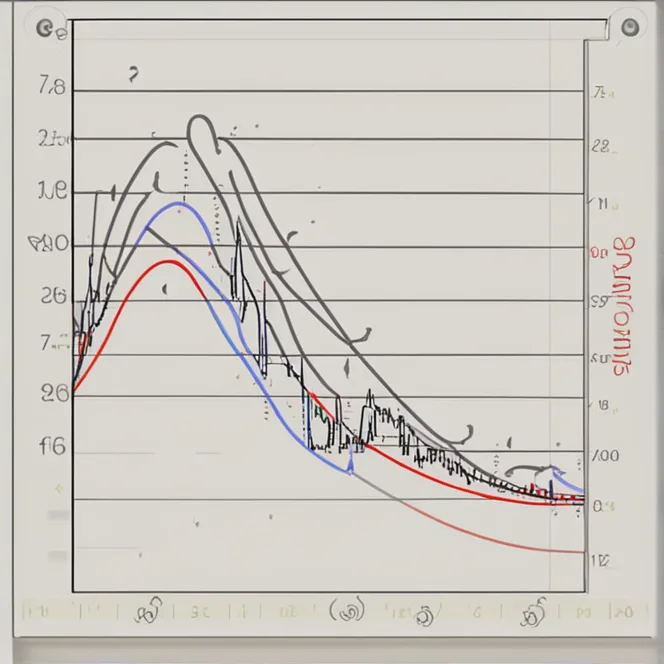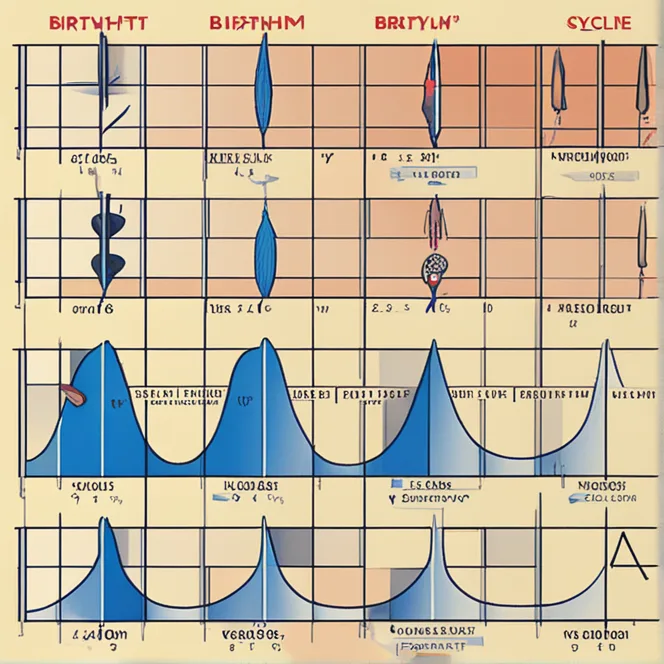
Understanding Biorhythm Charts: A Guide
Discover the art of biorhythm chart reading and learn how to tune into your physiological, emotional, and intellectual cycles.
article by Adrian Wallace
Biorhythms are a concept suggesting that our daily lives are significantly influenced by rhythmic cycles. Enthusiasts believe that by studying these patterns, one can predict periods of high performance, emotional resilience, and intellectual acuity. A biorhythm chart serves as a visual representation of these cycles, traditionally encompassing the physical, emotional, and intellectual aspects of our being. As you learn to read a biorhythm chart, you're essentially cracking a personal code to your body and mind's natural rhythms, which can lead to empowered decision-making for optimal well-being and performance.

Decoding the Cycles
To start with, a standard biorhythm chart plots three primary cycles: the 23-day physical cycle, the 28-day emotional cycle, and the 33-day intellectual cycle. Each cycle has a sinusoidal curve oscillating between high, low, and critical phases. The high phase signifies an above-average ability in the cycle's domain, the low phase suggests a period of reduced efficiency, and the critical day – the transitional point where the curve crosses the baseline – might indicate a day of unpredictability or increased risk for mistakes.

Plotting Your Biorhythms
Creating the chart starts with calculating the cycles from your birth date. Various online tools and software can generate your personal biorhythm chart. Once plotted, the x-axis represents time (usually days), and the y-axis represents the level of efficiency in each domain. You'll notice curves moving up and down the median line, which stands for equilibrium. By following these curves, you'll be able to predict the optimal times for certain activities according to each cycle's characteristics.

Interpreting the Physical Cycle
The physical biorhythm governs your body's energy, strength, and endurance levels. When the curve is above the baseline, you're likely to feel at your physical peak, making it a good time for demanding tasks and exercise. During the low phase below the baseline, your body may be more prone to fatigue and you should consider resting or going easy on strenuous activities. On critical days, you might want to avoid high-risk activities, as coordination could be compromised.

Navigating the Emotional Cycle
Your emotional biorhythm influences mood, creativity, and interpersonal relationships. In the positive phase, emotional intelligence and social interactions might come with ease. Negative phases can herald times of emotional instability or introversion. Critical days could coincide with mood swings or a lack of emotional balance. Awareness of your emotional biorhythms can improve your interactions and emotional management.
Assessing the Intellectual Cycle
Intellectual biorhythms affect cognitive functions, decision-making, and communication. When the intellectual curve peaks, you're more likely to learn new skills and solve complex problems effectively. Conversely, a downturn suggests a time when thinking can be cloudier, and it's wise to postpone making major decisions. Critical points suggest a disruption in mental processes, encouraging caution with intellectual tasks.
Combining Cycles for Holistic Insight
For a comprehensive reading, consider the interaction of all three cycles. Days with all three curves in high phases may be especially opportune for tackling significant ventures. In contrast, simultaneous low phases could advise against any major moves. Importantly, each cycle has its lag, and understanding the phase of one cycle can help compensate for another. For instance, during a low intellectual period, you might rely more on your physical or emotional strengths.
Practical Application of Biorhythm Charts
Biorhythm charts serve as a tool for planning and reflection. They are not scientifically proven to be accurate predictors but can be used as a self-awareness practice. By aligning your tasks with favorable cycles, you may improve your performance and well-being. Similarly, by recognizing your low phases, you can prepare and manage expectations. As with any predictive model, it's crucial to combine insights from biorhythm readings with personal judgment and circumstance.
Published: 12/6/2023
Modified: 12/6/2023
More predictions
Come back here soon to learn more about yourself and your future


The Mysteries Of Biorhythms & Compatibility
Explore the intriguing concept of biorhythms and how they influence personal compatibility in this insightful article.


Deciphering Biorhythms' Mystique
In a realm filled with endless wonders and mysteries, there arose a story that promised to unveil the deepest secrets of humanity. A tale that spoke of an ancient rhythm, a harmonious dance that resonated in the heart of every soul. This is the legend of biorhythms, the celestial symphony that governs us all.


Biorhythms and Birthdays: Physical Cycle Compatibility
In the intricate dance of human relationships, biorhythms play a crucial yet often overlooked role. Biorhythms, the natural cycles of physical, emotional, and intellectual energies that ebb and flow within each of us, are intrinsically linked to our birth dates. Understanding how these rhythms align or conflict with those of others can provide valuable insights into relationship compatibility.